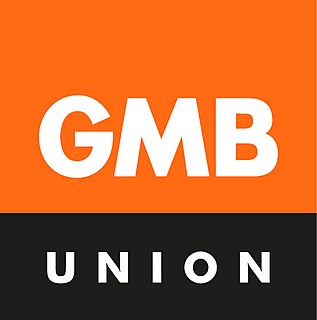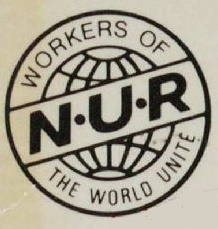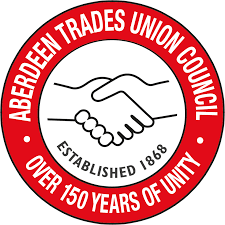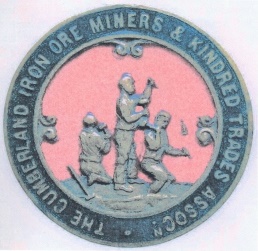Related Research Articles
In British politics, an affiliated trade union is one that is linked to the Labour Party. The party was created by the trade unions and socialist societies in 1900 as the Labour Representation Committee and the unions have retained close institutional links with it.

The GMB is a general trade union in the United Kingdom which has more than 460,000 members. Its members work in nearly all industrial sectors, in retail, security, schools, distribution, the utilities, social care, the National Health Service (NHS), ambulance service and local government.

The Associated Society of Locomotive Engineers and Firemen (ASLEF) is a British trade union representing train drivers. It is part of the International Transport Workers' Federation and the European Transport Workers' Federation. At the end of 2018 ASLEF had 22,424 members. Its current General Secretary is Mick Whelan.

The National Union of Rail, Maritime and Transport Workers is a British trade union covering the transport sector. Its current President is Alex Gordon and its current General Secretary is Mick Lynch.

The National Union of Seamen (NUS) was the principal trade union of merchant seafarers in the United Kingdom from the late 1880s to 1990. In 1990, the union amalgamated with the National Union of Railwaymen to form the National Union of Rail, Maritime and Transport Workers (RMT).

The National Union of Railwaymen was a trade union of railway workers in the United Kingdom. The largest railway workers' union in the country, it was influential in the national trade union movement.
The Workers' Union was a general union based in the United Kingdom, but with some branches in other countries. During the 1910s, it was the largest general union in the UK, but it entered a rapid decline in the 1920s, and eventually became part of the Transport and General Workers' Union (TGWU).

The National Trades Union Congress (NTUC), also known as the Singapore National Trades Union Congress (SNTUC) internationally, is the sole national trade union centre in Singapore. NTUC is at the heart of the Labour Movement which comprises 59 affiliated trade unions, 5 affiliated trade associations, 10 social enterprises, 6 related organisations as well as a growing ecosystem of U Associates and enterprise partners. Together, it helms May Day celebrations and organises an annual rally in support of workers' solidarity and commitment to tripartite partnership. The NTUC has had a symbiotic relationship with the People's Action Party (PAP) since its inception in 1961.

The National Union of Distributive and Allied Workers (NUDAW) was a trade union in the United Kingdom.

The National Union of Boot and Shoe Operatives (NUBSO) was a trade union in the United Kingdom which existed between 1873 and 1971. It represented workers in the footwear industry.

The London Trades Council was an early labour organisation, uniting London's trade unionists. Its modern successor organisation is the Greater London Association of Trades (Union) Councils
Edward Timothy Palmer was a British Labour Party politician.
The United Textile Factory Workers' Association (UTFWA) was a trade union federation in Great Britain. It was active from 1889 until 1975.
The National Union of Insurance Workers (NUIW) was a trade union representing workers in the insurance industry in the United Kingdom.
The National Amalgamated Union of Life Assurance Workers (NAULAW) was a trade union representing insurance workers in the United Kingdom and Ireland.
The National Federation of Insurance Workers (NFIW) was a trade union federation of insurance trade unions in the United Kingdom.
This article lists the Labour Party's election results from the 1922 United Kingdom general election to 1929, including by-elections.

Aberdeen Trades Union Council (ATUC) is the body made up of affiliated trade union branches and organisations working in the Aberdeen and Aberdeenshire area to promote the interests of workers in the region. The ATUC provides services to affiliated branches on a wide range of industrial, social and community issues and is affiliated to the STUC. It has an office based in Aberdeen, Scotland.

The Cumberland Iron Ore Miners' and Kindred Trades' Association was a trade union, principally representing iron ore miners in the Cumberland area of North West England.
This article is about the sponsorship of British Members of Parliament by mining trade unions.
References
- 1 2 3 4 Marsh, Arthur Ivor; Smethurst, John B. (2006). Historical Directory of Trade Unions. Vol. 5. Aldershot: Ashgate. pp. 304-312. ISBN 085967990X.
- 1 2 The Labour Who's Who. London: The Labour Publishing Company. 1924. pp. 162–163.
- 1 2 Dennett, Laurie (1998). A Sense of Security: 150 Years of Prudential. Granta Editions. pp. 177, 257. ISBN 185757060X.
- ↑ Stenton, Michael; Lees, Stephen (1981). Who's Who of British Members of Parliament. Vol. III. Harvester Press. p. 273.
- 1 2 3 4 Benney, Mark; Gray, E. P.; Pear, R. H. (1956). How People Vote: A Study of Electoral Behaviour in Greenwich. Routledge. p. 56.
- ↑ Harrison, Martin (1960). Trade Unions and the Labour Party since 1945. London: George Allen & Unwin. pp. 307–314.
- ↑ "Appendix III: List of sanctioned candidates, June, 1922". Report of the Twenty-second Annual Conference of the Labour Party: 116–126. 1922.. Note that this list is of the sanctioned candidates as of June 1922, and there were some changes between this date and the general election.